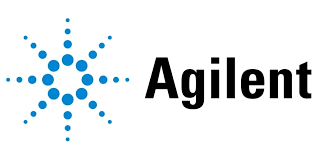Emotion Recognition Tech
Published Date: 02 June 2025 | Report Code: emotion-recognition-tech
Emotion Recognition Tech Market Size, Share, Industry Trends and Forecast to 2033
This comprehensive report examines the Emotion Recognition Tech market in a detailed manner, charting its evolution, innovations, and key growth drivers from 2024 to 2033. It outlines market dynamics, provides forecasts and key data insights, and analyzes segmentation by technology, application, user profile, deployment method, and compatibility. The document serves as a vital resource for industry stakeholders.
| Metric | Value |
|---|---|
| Study Period | 2024 - 2033 |
| 2024 Market Size | $1.80 Billion |
| CAGR (2024-2033) | 10.2% |
| 2033 Market Size | $4.46 Billion |
| Top Companies | Innovative Biometric Solutions Inc., Emotion Analytics Global |
| Last Modified Date | 02 June 2025 |
Emotion Recognition Tech (2024 - 2033)
Emotion Recognition Tech Market Overview
Customize Emotion Recognition Tech market research report
- ✔ Get in-depth analysis of Emotion Recognition Tech market size, growth, and forecasts.
- ✔ Understand Emotion Recognition Tech's regional dynamics and industry-specific trends.
- ✔ Identify potential applications, end-user demand, and growth segments in Emotion Recognition Tech
What is the Market Size & CAGR of Emotion Recognition Tech market in 2024?
Emotion Recognition Tech Industry Analysis
Emotion Recognition Tech Market Segmentation and Scope
Tell us your focus area and get a customized research report.
Emotion Recognition Tech Market Analysis Report by Region
Europe Emotion Recognition Tech:
Europe is set to witness robust growth in the Emotion Recognition Tech market, increasing from $0.58 Billion in 2024 to roughly $1.43 Billion by 2033. The region benefits from progressive data protection regulations and a well-established digital ecosystem, which together create a fertile ground for innovation in emotion recognition.Asia Pacific Emotion Recognition Tech:
In Asia Pacific, the market is forecasted to grow from a modest base of $0.34 Billion in 2024 to approximately $0.84 Billion by 2033. This growth is driven by heightened consumer tech adoption, significant investments in R&D, and burgeoning applications in healthcare and consumer electronics. Local governments are increasingly supporting initiatives that integrate AI into conventional industries, which further enhances market development.North America Emotion Recognition Tech:
North America remains a leading region for Emotion Recognition Tech, with market size expanding from $0.63 Billion in 2024 to an estimated $1.57 Billion in 2033. The strong presence of tech innovators, advanced research facilities, and a high degree of digital penetration are key factors fostering significant growth in this region.South America Emotion Recognition Tech:
South America, covering the Latin American region, is experiencing steady market expansion from $0.15 Billion in 2024 to an anticipated $0.38 Billion by 2033. The region benefits from a growing middle-class population, improved technological infrastructure, and increased corporate interest in innovative customer engagement strategies.Middle East & Africa Emotion Recognition Tech:
The Middle East and Africa region is expected to grow from $0.10 Billion in 2024 to almost $0.24 Billion by 2033. Although currently a smaller market, the region is gaining momentum due to increased investments in digital transformation initiatives, improved technological infrastructure, and a growing awareness of the benefits of advanced emotion recognition systems.Tell us your focus area and get a customized research report.
Emotion Recognition Tech Market Analysis By Technology
Global Emotion Recognition Technology Market, By Technology Market Analysis (2024 - 2033)
The technology segmentation highlights the integration of diverse recognition methods such as facial, voice, and gesture recognition. Facial recognition continues to lead the innovation race with its deep learning algorithms and wide-ranging applications. Voice and gesture recognition are rapidly evolving, contributing to a balanced technology portfolio. Advancements in sensor accuracy, data processing speed, and algorithm sophistication are pivotal, enabling these technologies to drive more intuitive human-machine interactions and improve overall system performance.
Emotion Recognition Tech Market Analysis By Application
Global Emotion Recognition Technology Market, By Application Market Analysis (2024 - 2033)
Application segmentation covers diverse sectors including healthcare, automotive, gaming, retail, and advertising, each leveraging emotion recognition technologies in unique ways. For example, healthcare applications are benefiting from real-time patient emotion tracking, while automotive integrations enhance driver safety through emotion awareness. Retail and advertising sectors employ these technologies for customer sentiment analysis and targeted marketing strategies. Each application not only optimizes user experience but also delivers measurable improvements in operational efficiencies, thereby reinforcing overall market expansion.
Emotion Recognition Tech Market Analysis By Profile
Global Emotion Recognition Technology Market, By User Profile Market Analysis (2024 - 2033)
Analyzing the market by user profile reveals a clear divide between enterprise solutions and individual user applications. Enterprises are predominantly driving the market with large-scale, customized deployments that improve customer engagement and streamline business operations. In contrast, individual users engage with emotion recognition technologies through consumer devices and mobile applications. This dichotomy clearly illustrates the varied needs across different user bases and highlights the strategy for market penetration through tailored solutions aimed at both large organizations and everyday consumers.
Emotion Recognition Tech Market Analysis By Deployment Method
Global Emotion Recognition Technology Market, By Deployment Method Market Analysis (2024 - 2033)
Deployment method segmentation covers cloud-based and on-premise solutions. Cloud-based deployments have become increasingly popular due to their scalability, reduced capital expenditure, and ease of maintenance. They enable rapid integration and offer flexibility for businesses of all sizes. In contrast, on-premise solutions, though less prevalent, cater to industries with stringent security and data privacy requirements. This division illustrates the importance of adaptable deployment strategies that meet varied operational demands and security standards in an evolving digital landscape.
Emotion Recognition Tech Market Analysis By Compatibility
Global Emotion Recognition Technology Market, By Compatibility Market Analysis (2024 - 2033)
Compatibility segmentation differentiates between cross-platform and dedicated solutions. Cross-platform solutions are designed to operate seamlessly across multiple operating systems and devices, offering enhanced connectivity and integration of emotion recognition technology into existing infrastructures. Dedicated solutions, meanwhile, are engineered for specific use cases or industries, providing optimized performance in targeted applications. This segmentation category underlines the balance between broad market reach and the need for specialized systems that address unique industry challenges and requirements.
Emotion Recognition Tech Market Trends and Future Forecast
Tell us your focus area and get a customized research report.
Global Market Leaders and Top Companies in Emotion Recognition Tech Industry
Innovative Biometric Solutions Inc.:
A pioneer in biometric recognition technologies, Innovative Biometric Solutions Inc. has developed state-of-the-art emotion recognition systems that integrate seamlessly with security, healthcare, and consumer electronics applications. Their innovative approach and commitment to research have positioned them as a global leader in the industry.Emotion Analytics Global:
Specializing in advanced AI-driven emotion analytics, Emotion Analytics Global offers comprehensive solutions that empower businesses to better understand consumer behavior and enhance user engagement. With an extensive portfolio covering facial, voice, and gesture recognition, the company is a trusted partner for numerous global enterprises.We're grateful to work with incredible clients.









FAQs
What is the market size of Emotion Recognition Tech?
The global Emotion Recognition Tech market is projected to reach $1.8 billion by 2024, with a strong compound annual growth rate (CAGR) of 10.2%. This growth reflects increasing adoption across various sectors, highlighting the technology's significance in the digital landscape.
What are the key market players or companies in the Emotion Recognition Tech industry?
Key players in the Emotion Recognition Tech industry include major technology firms and innovative startups that focus on AI and machine learning. These companies drive advancements in algorithms and applications, expanding the reach of emotion recognition in diverse domains such as healthcare and retail.
What are the primary factors driving the growth in the Emotion Recognition Tech industry?
The growth in the Emotion Recognition Tech industry is primarily driven by rising demand for enhanced user experience in applications like gaming and marketing, increasing deployment of AI across sectors, and advancements in technology, which improve accuracy and integration of emotion detection systems.
Which region is the fastest Growing in the Emotion Recognition Tech?
North America is forecasted to be the fastest-growing region in the Emotion Recognition Tech market, anticipated to grow from $0.63 billion in 2024 to $1.57 billion by 2033. This growth is fueled by advancements in AI and significant investments in technology.
Does ConsaInsights provide customized market report data for the Emotion Recognition Tech industry?
Yes, ConsaInsights offers customized market report data for the Emotion Recognition Tech industry. Clients can tailor reports to receive specific insights, market dynamics, and trends that are uniquely relevant to their strategic needs and operational goals.
What deliverables can I expect from this Emotion Recognition Tech market research project?
Deliverables from the Emotion Recognition Tech market research project may include comprehensive market analysis reports, insights on trends and forecasts, competitive landscape assessments, and detailed segmentation data, tailored specifically to stakeholder requirements.
What are the market trends of Emotion Recognition Tech?
Current trends in the Emotion Recognition Tech sector include increased integration with AI and machine learning, a shift towards personalized customer experiences in various industries, and heightened focus on ethical considerations regarding data usage and user privacy.
